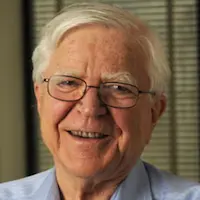Wireless Communications
Here you can find lists of great Wireless Communications books recommended by some of top experts form best universities and leading technology companies.






Wireless communications is a crucial aspect of modern society, providing the means for people to communicate and access information through a variety of wireless devices. At its core, wireless communications is the transmission of information over a distance without the use of wires or cables. In this article, we will explore the basics of wireless communications, including the different types of wireless communications systems, the different types of modulation techniques, and the applications of wireless communications in various fields of electrical engineering.
There are several different types of wireless communications systems, each with their own unique characteristics and capabilities. The most common types include cellular networks, wireless local area networks (WLANs), and satellite communications. Cellular networks, such as those used for mobile phones, are based on a cellular architecture in which a geographic area is divided into smaller cells, each served by a base station. WLANs, such as Wi-Fi, are used for short-range communications and typically operate in the unlicensed ISM bands. Satellite communications, on the other hand, use satellites in orbit around the Earth to relay signals between ground stations.
The process of transmitting information over a wireless channel requires modulation, which is the process of encoding information on a carrier signal. There are several different types of modulation techniques used in wireless communications, including amplitude modulation (AM), frequency modulation (FM), and phase modulation (PM). In addition, digital modulation techniques such as quadrature amplitude modulation (QAM) and orthogonal frequency-division multiplexing (OFDM) are widely used in wireless communications to increase data rates and improve system performance.
One of the most important applications of wireless communications is in the field of mobile communications. Wireless communications technologies, such as cellular networks, are used to provide people with mobile access to the internet and other forms of communication. This has had a profound impact on society, enabling people to stay connected and communicate with one another from anywhere in the world.
Another important application of wireless communications is in the field of industrial control systems. Wireless communications technologies, such as Zigbee and Z-Wave, are used to control and monitor industrial systems wirelessly, increasing efficiency and reducing the need for wired connections.
Wireless communications also plays a critical role in the field of transportation, providing wireless connectivity for vehicles such as cars, trucks and trains. This enables real-time monitoring, remote control and communication between the vehicles and the control center. This improves safety, efficiency and enables new services like autonomous driving.
In the field of Internet of Things (IoT), wireless communications plays a crucial role in connecting a wide variety of devices and systems. This allows for the monitoring, control and automation of various systems, such as home appliances and industrial equipment, to improve efficiency and reduce costs.
Wireless communications also plays a crucial role in the field of military and emergency response. Wireless communications technologies, such as satellite communications and mobile networks, are used to provide secure and reliable communications for military and emergency response personnel.
In conclusion, wireless communications is a crucial aspect of modern society, providing the means for people to communicate and access information through a variety of wireless devices. Understanding the different types of wireless communications systems, the different types of modulation techniques, and the applications of wireless communications in various fields of electrical engineering is crucial for anyone working in this field. Wireless communications plays a critical role in mobile communications, industrial control systems, transportation, IoT, military and emergency response, and many other fields. The field is continuously advancing and improving, with new technologies and standards emerging constantly. As such, it is important to stay up to date with the latest developments in wireless communications to be able to make informed decisions and design effective systems.